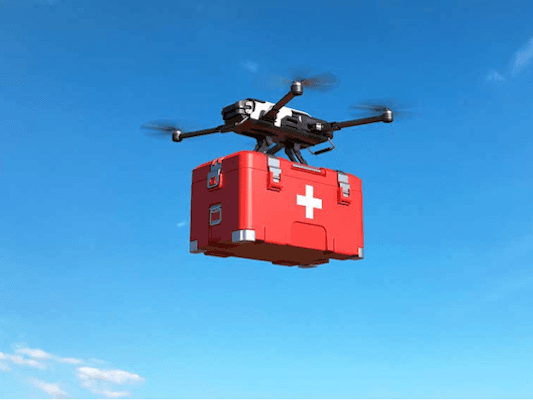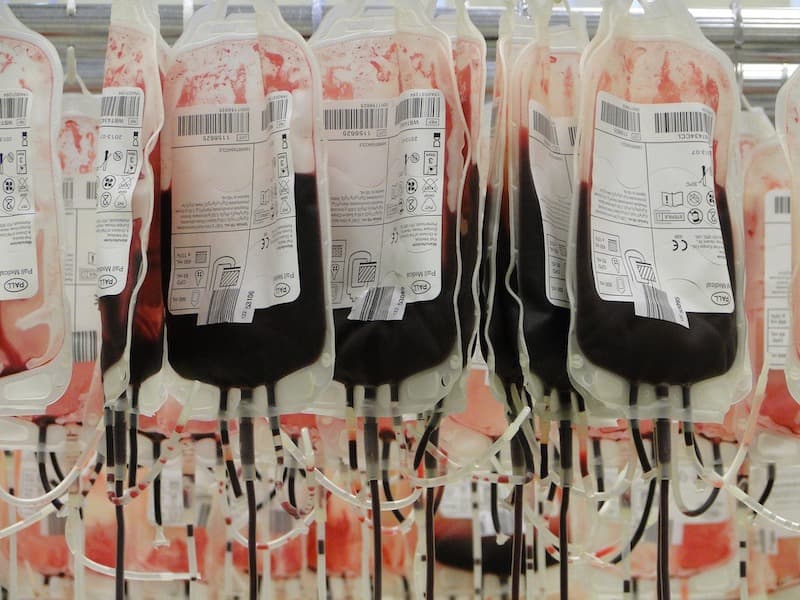Published December 1, 2022
Medical delivery drones
Alphaswift Industries is leading the drive toward a more consumer-centric care model because we think that patient care should be provided on the patient's terms.

Alphaswift Industries is leading the drive toward a more consumer-centric care model because we think that patient care should be provided on the patient's terms. We have the potential to deliver care closer to home with automated, on-demand delivery. People frequently think of convenience as the primary benefit, and acquiring medications on demand is undoubtedly the most convenient option.
Over the past 20 months, our healthcare systems have undergone significant upheaval. In many cases, the infrastructure and solutions we relied on before the pandemic are no longer adequate. Instant logistics can close some of the gaps that new issues prompt. These features make it possible to deliver medical supplies for both routine public health requirements and emergency planning and response. With 3.4 billion people living in rural regions across the globe, and an increase in disposable income, there is an increasing demand for access to dependable healthcare services.

Although a trauma center must have fast access to blood products, this supply is limited, and there are frequently not huge stockpiles on hand. Transfusion-dependent patients need to be transported to larger hospitals when resources, such as blood supplies, are scarce or unavailable, according to current standards of care. This might cause a delay in the delivery of initial care and is usually expensive. Advanced transport teams have been used to carry plasma and packed red blood cells (PRBCs) in an effort to resolve this problem. Despite being novel, the adjustment cannot eliminate the high operational costs of manned vehicles or the dangers faced by personnel when traveling in isolated places.
Numerous considerations, such as shelf life and cost, make it difficult for critical access hospitals to keep an inventory of blood supplies. To avoid delays in urgent transfusions, hospitals may keep three different types of plasma and a variety of PRBC products accessible. While plasma and PRBCs have relatively lengthy shelf lives (42 days and 1 year, respectively), other products, such as platelets and thawed plasma, may be squandered when demand is low. Comparatively speaking, critical access hospitals have a smaller inventory of blood supplies than large tertiary care institutions. A huge transfusion may be required for a patient who is bleeding severely, which can frequently cause the blood supply in a hospital to run out very quickly. An average large transfusion for a trauma patient requires 22 units of PRBCs and 14 units of platelets, which is more PRBCs than the majority of critical access hospitals have on hand. 20 Plasma is a component of the initial massive transfusion resuscitation and is often in short supply in critical access facilities. There is always enough frozen blood on hand in regional blood banks that supply critical access hospitals to meet regular demand. It is usual for hospitals to send blood that is about to expire (within 7–10 days of expiration) back to a larger hospital in order to reduce waste as these facilities do not use blood products as regularly.

A critical access hospital's blood supply may run low during periods of high demand or potentially for just one patient who is bleeding heavily, necessitating urgent support from the local blood centre. This occurred, for instance, during the Bam earthquake in Iran. This incident made clear how ineffective the system in place for distributing blood is. Only 23% of the 108,985 blood units that were donated were ultimately given to hospitals. While there are several reasons that can make disaster response more difficult, it is evident that distribution, rather than supply, is still a major issue.
However, depending on their size, UAVs can even release goods at a permitted hover altitude and just need a small amount of space or appropriate equipment to land. They are therefore perfect for this kind of application. Further research can be done on the use of UAVs to supply blood and medication to cruise ships, military ships, and oil installations.
Manned transport services play a significant part in providing medical care, and they won't be replaced anytime soon. However, unmanned delivery to essential access institutions may be used to support their efforts, cutting down on patient transfers and transportation expenses while minimizing risks to human life.
When opposed to a regional hospital, a critical access hospital frequently has a smaller inventory of and a smaller selection of pharmaceuticals. It is impractical for many hospitals to carry antivenom because it is expensive, infrequently used, and has a short shelf life. Due to the need to either transfer the patient to the product or ship the product to the patient, there may be considerable delays in the delivery of care. UAVs might carry out the shipper job without endangering transport crews or necessitating the relocation of the patient. Similar to medical equipment, UAVs may also be used to deliver tourniquets, combat gauze, automatic defibrillators, and external fixator devices when necessary.

Speed is important in the resource-intensive setting of a disaster, and UAVs' unique qualities, such as their ability to fly across hazardous terrain and closed highways without endangering the aircraft crew, are extremely valuable. Our first findings imply that, in times of severe shortage, the utilization of UAVs might be a workable strategy for the transportation of medical supplies. Alphaswift has already done trials to determine that the cost per kg per km value is much lower than that of conventional medical delivery.